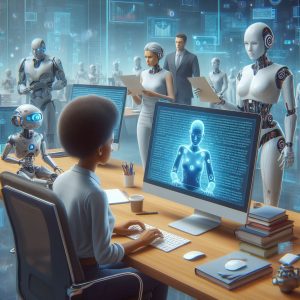Artificial intelligence (AI) is rapidly changing various industries, and the film industry is no exception. DPs are embracing AI tools that assist them in capturing stunning visuals, enhancing storytelling, and increasing productivity. Let’s explore the impact of AI on the art of cinematography and visual storytelling in filmmaking.
1. Automating Repetitive Tasks:
AI-powered software automates time-consuming tasks such as color correction, shot composition, and camera movement analysis. This allows DPs to focus on creative aspects like lighting and scene composition, ultimately saving valuable time and resources.
2. Enhanced Cinematography Techniques:
AI algorithms can analyze large datasets of films, identifying patterns and techniques that contribute to successful cinematography. These insights can help DPs make informed decisions about camera angles, lighting setups, and shot transitions.
3. Real-Time Scene Analysis:
AI-powered tools can analyze scenes in real-time, providing DPs with instant feedback on lighting, focus, and composition. This allows for immediate adjustments, ensuring optimal visual quality throughout the filmmaking process.
4. Predictive Analytics:
AI algorithms can predict how audiences will respond to certain visual elements in a film. This information guides DPs in crafting scenes that resonate with viewers on an emotional level, enhancing the storytelling impact.
5. Immersive Visual Experiences:
AI-powered virtual reality (VR) and augmented reality (AR) technologies offer DPs new ways to create immersive visual experiences for viewers. These technologies allow filmmakers to transcend traditional storytelling boundaries, creating truly unique and engaging cinematic experiences.
6. AI-Generated Content:
AI can generate realistic synthetic visuals and animations, providing filmmakers with additional creative possibilities. This opens up new avenues for visual storytelling, particularly in sci-fi, fantasy, and animated films.
7. Collaboration and Idea Sharing:
AI platforms facilitate collaboration among cinematographers, directors, and filmmakers from around the world. These platforms enable the sharing of ideas, techniques, and experiences, helping to elevate the art of cinematography collectively.
8. Personalized Visual Storytelling:
AI algorithms can analyze viewers’ preferences and behaviors, enabling DPs to tailor their visual storytelling to specific audiences. This personalized approach enhances the viewer’s engagement and emotional connection to the film.
9. Skill Enhancement and Training:
AI-powered tools can be used for cinematographer training and skill development. These tools provide real-time feedback and guidance, allowing aspiring DPs to hone their craft and improve their visual storytelling abilities.
10. Ethical Considerations:
The use of AI in cinematography raises ethical considerations related to job displacement, creative control, and the preservation of the artistic integrity of filmmaking. Cinematographers must strike a balance between embracing AI’s benefits and ensuring that the human touch remains integral to the filmmaking process.
In conclusion, AI is transforming the world of cinematography and visual storytelling in filmmaking. DPs are leveraging AI tools to automate tasks, enhance techniques, and create immersive visual experiences. While AI brings exciting possibilities, it also presents ethical challenges that the filmmaking community must navigate. As AI continues to evolve, cinematographers will play a crucial role in shaping its integration into the art of filmmaking, ensuring that technology serves as a tool to enhance creativity and storytelling rather than replace it.



